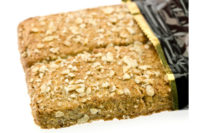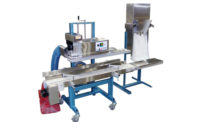These days, snacks are becoming the focus of many packaged-product companies that hope to gain payoffs from them.
Snacking "is a long-term trend and the future of eating," says Gary Stibel, chief executive of the New England Consulting Group, which has advised such clients as PepsiCo's Frito-Lay, the largest salty-snack player in the world by sales. "You and I will continue to snack more and sit down to a meal less."
Consumers are snacking more throughout the day, and in developing markets, more women are going to work, which is boosting the spread of modern retail formats. Projections by analysts indicate there’s plenty of “boon” to go around, in the $560-billion global snacks market, as measured by Euromonitor Inc. So even as such smaller snack players as ConAgra Foods Inc. (CAG) or General Mills Inc. (GIS) try to get bigger in snacking, such larger players as PepsiCo Inc. (PEP), which owns Frito-Lay, and Kraft Foods Inc. (KFT) need not worry about losing any market share.
What’s more, snack prices can be raised easily versus those of some grocery staples, according to analysts. Snacks generally start at low prices and have the added value of convenience, for which shoppers are willing to pay. Snacks are also often bought on a whim, at gas stations, convenience stores, drug stores and elsewhere, making them an afterthought that satisfies an urge.
Food marketers are going after snacks in many ways. This year, Frito-Lay is focusing on adding more premium- and lower-priced chips to its lineup in order to capitalize on more growth in those price ranges. ConAgra is rolling out pre-popped Orville Redenbacher’s popcorn in ready-to-eat bags. And Kellogg Co. has its pending $2.7 billion purchase of Pringles while General Mills recently bought Food Should Taste Good Inc., which makes tortilla chips in flavors such as sweet potato and chocolate, to take advantage of the surge in snacks. It appears that snacks can handle the slack, with sales volume holding up well to price increases.
Source: www.foxbusiness.com
Get our new eMagazine delivered to your inbox every month.
Stay in the know on the latest snack and bakery industry trends.
SUBSCRIBE TODAY!Copyright ©2024. All Rights Reserved BNP Media.
Design, CMS, Hosting & Web Development :: ePublishing



